Recent advances of photoresponsive nanomaterials for diagnosis and treatment of acute kidney injury
- PMID: 39501286
- PMCID: PMC11536863
- DOI: 10.1186/s12951-024-02906-6
Recent advances of photoresponsive nanomaterials for diagnosis and treatment of acute kidney injury
Abstract
Non-invasive imaging in the near-infrared region (NIR) offers enhanced tissue penetration, reduced spontaneous fluorescence of biological tissues, and improved signal-to-noise ratio (SNR), rendering it more suitable for in vivo deep tissue imaging. In recent years, a plethora of NIR photoresponsive materials have been employed for disease diagnosis, particularly acute kidney injury (AKI). These encompass inorganic nonmetallic materials such as carbon (C), silicon (Si), phosphorus (P), and upconversion nanoparticles (UCNPs); precious metal nanoparticles like gold and silver; as well as small molecule and organic semiconductor polymer nanoparticles with near infrared responsiveness. These materials enable effective therapy triggered by NIR light and serve as valuable tools for monitoring AKI in living systems. The review provides a concise overview of the current state and pathological characteristics of AKI, followed by an exploration of the application of nanomaterials and photoresponsive nanomaterials in AKI. Finally, it presents the design challenges and prospects associated with NIR photoresponsive materials in AKI.
Keywords: Acute kidney injury; Diagnosis and treatment; Fluorescent probe; Nanomaterials; Near-infrared.
© 2024. The Author(s).
Conflict of interest statement
The authors declare they have no competing interests.
Figures

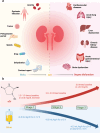

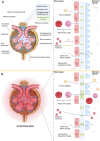
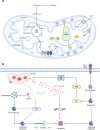
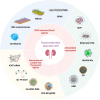

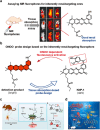

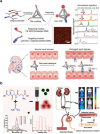
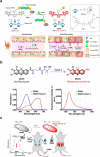

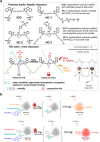
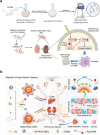

Similar articles
-
NIR-II upconversion nanomaterials for biomedical applications.Nanoscale. 2025 Feb 6;17(6):2985-3002. doi: 10.1039/d4nr04445b. Nanoscale. 2025. PMID: 39717956 Review.
-
Modulation of Near-Infrared Afterglow Luminescence in Inorganic Nanomaterials for Biological Applications.Adv Mater. 2025 Apr;37(16):e2419349. doi: 10.1002/adma.202419349. Epub 2025 Mar 10. Adv Mater. 2025. PMID: 40062832 Review.
-
An Activatable Near-Infrared Fluorescence Probe for in Vivo Imaging of Acute Kidney Injury by Targeting Phosphatidylserine and Caspase-3.J Am Chem Soc. 2021 Nov 3;143(43):18294-18304. doi: 10.1021/jacs.1c08898. Epub 2021 Oct 21. J Am Chem Soc. 2021. PMID: 34672197
-
Enhanced photoconversion performance of NdVO4/Au nanocrystals for photothermal/photoacoustic imaging guided and near infrared light-triggered anticancer phototherapy.Acta Biomater. 2019 Nov;99:295-306. doi: 10.1016/j.actbio.2019.08.026. Epub 2019 Aug 19. Acta Biomater. 2019. PMID: 31437636
-
Immunoassay of goat antihuman immunoglobulin G antibody based on luminescence resonance energy transfer between near-infrared responsive NaYF4:Yb, Er upconversion fluorescent nanoparticles and gold nanoparticles.Anal Chem. 2009 Nov 1;81(21):8783-9. doi: 10.1021/ac901808q. Anal Chem. 2009. PMID: 19807113
Cited by
-
MoS2-Plasmonic Hybrid Platforms: Next-Generation Tools for Biological Applications.Nanomaterials (Basel). 2025 Jan 13;15(2):111. doi: 10.3390/nano15020111. Nanomaterials (Basel). 2025. PMID: 39852726 Free PMC article. Review.
-
Application of Nanomaterial-Mediated Ferroptosis Regulation in Kidney Disease.Int J Nanomedicine. 2025 Feb 5;20:1637-1659. doi: 10.2147/IJN.S496644. eCollection 2025. Int J Nanomedicine. 2025. PMID: 39931533 Free PMC article. Review.
-
In situ radiochemical doping of functionalized inorganic nanoplatforms for theranostic applications: a paradigm shift in nanooncology.J Nanobiotechnology. 2025 Jun 2;23(1):407. doi: 10.1186/s12951-025-03472-1. J Nanobiotechnology. 2025. PMID: 40457312 Free PMC article. Review.
References
Publication types
MeSH terms
LinkOut - more resources
Full Text Sources
Miscellaneous

